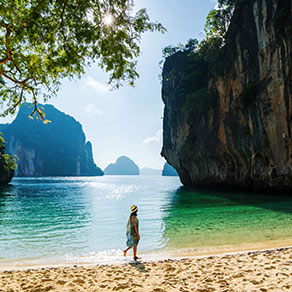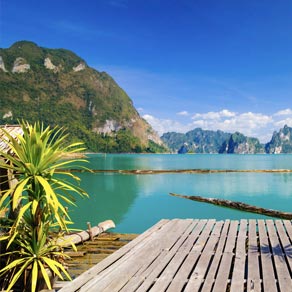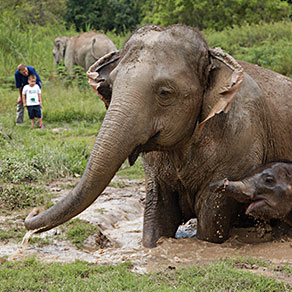Exploring the Ancient Temples of Thailand
The old kingdoms of Thailand, each imbued with their distinctive artistic styles and religious observances, have imparted to the world a striking array of ancient temples.
These edifices, weathered by time yet unyielding in their grandeur, offer a captivating glimpse into a history steeped in tradition and spirituality.
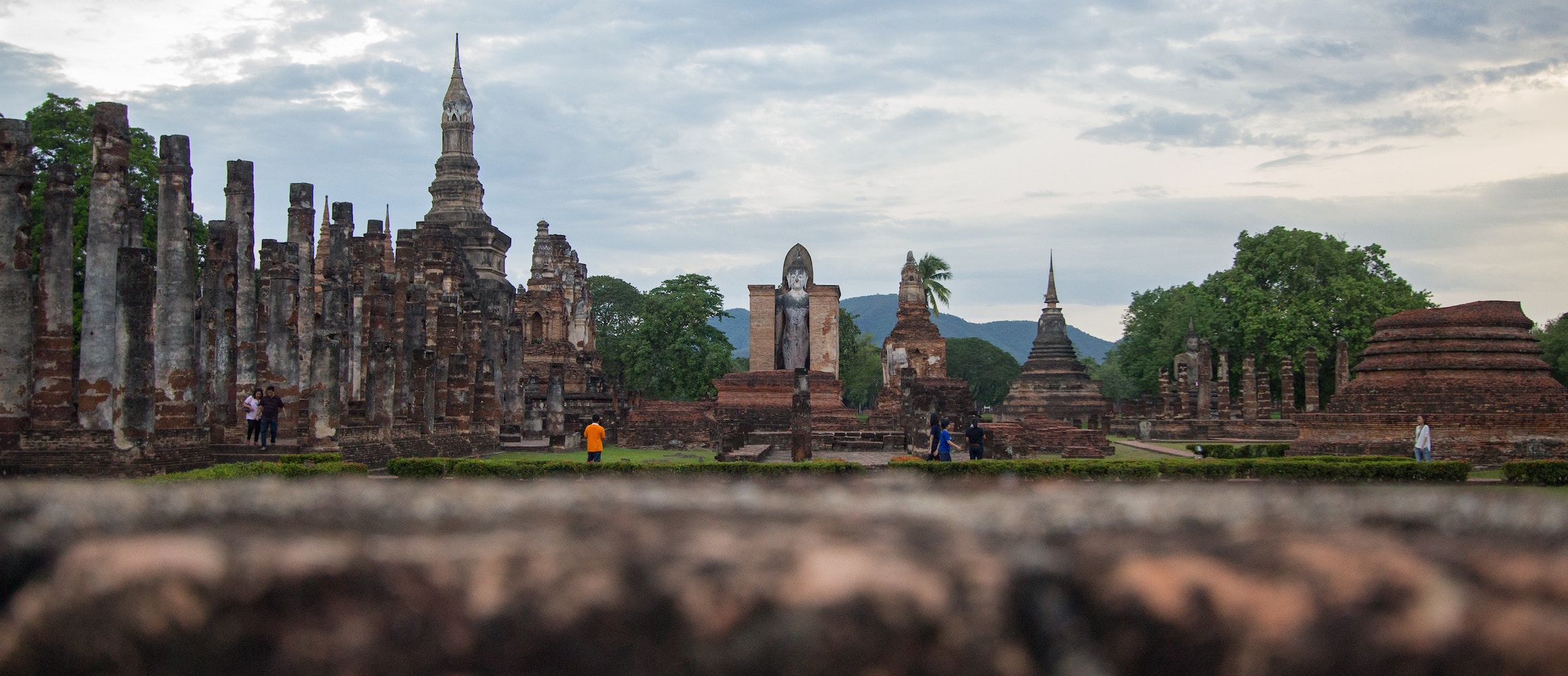
Sukhothai Historical Park: The Dawn of Happiness
In the heart of Sukhothai lies a sanctuary filled with stone guardians of a bygone era. Wat Mahathat, the grandest among these historical vestiges, beckons us with its serene Buddha images, frozen in meditative tranquillity, encircled by an ensemble of majestic chedis and timeworn pillars. The stone lotus buds on top of the chedis, radiating a sense of poised elegance, whisper tales of a kingdom that cherished Buddhism, art, and culture.
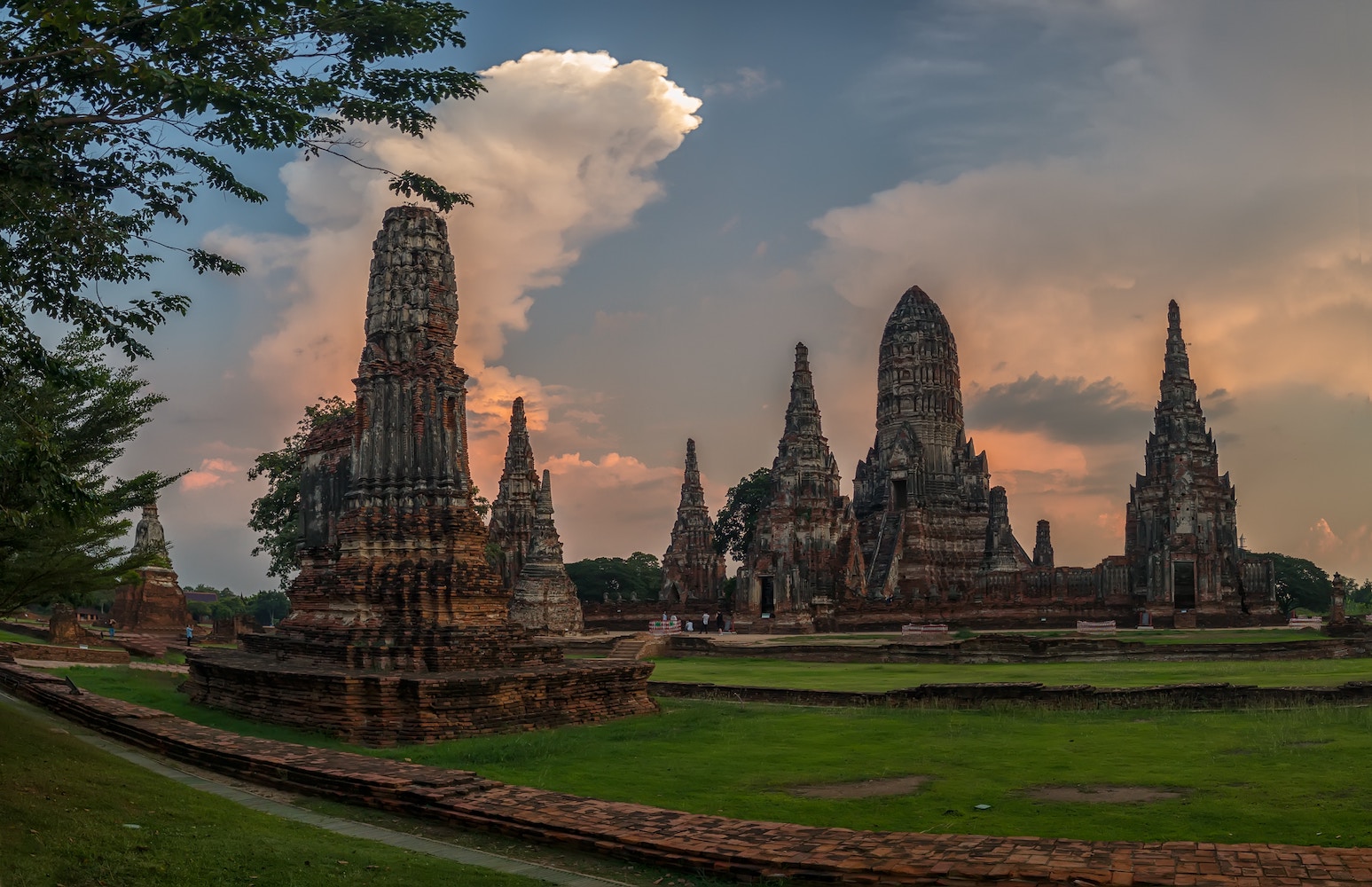
Ayutthaya: Testament of Time and Tenacity
Travel south, and you encounter the time-honoured city of Ayutthaya, once a cosmopolitan hub in the 14th century, brimming with art, commerce, and diplomatic intrigue. Wat Chaiwatthanaram, situated on the riverbank, paints a poignant picture of its erstwhile splendour. Despite centuries of warfare and elemental erosion, the Khmer-style prangs tower with unwavering resilience, their intricate detailing narrating tales of an intermingling of cultures and ideas.
Lopburi: Where History Meets the Wild
As we journey to Lopburi, the landscape is punctuated by the sporadic presence of mischievous macaques. In the city centre, their playground is none other than Prang Sam Yot, a monument erected in the Hindu architectural style. Once dedicated to the Hindu trinity – Brahma, Vishnu, and Shiva, it stands as an embodiment of cultural integration. The silent stone carvings juxtapose peculiarly with the frolicking monkeys, creating a theatrical symphony of the ancient and the wild.
Phanom Rung: A Passage to the Cosmos
We continue our journey to the far northeastern part of Thailand. Nestled atop an extinct volcano is Prasat Hin Phanom Rung, an architectural marvel of the Khmer empire, intricately aligned with celestial bodies. As you ascend its laboriously carved stairway, you feel an almost celestial connection, intensified by the grandeur of the stone facades adorned with intricate reliefs of Hindu mythology.
Chiang Mai: Mountains and Manuscripts
Proceeding north, Chiang Mai invites us into its sacred heart, wherein resides Wat Phra Singh. This 14th-century temple, adorned with an elegant Lanna-style roof, houses a revered Buddha image, the Phra Singh. Amid the gilded finery, it’s the library that truly captivates – an elevated repository safeguarding ancient palm-leaf manuscripts. The tranquil ambience, the delicate scent of old parchment, whispers of wisdom captured in script – it’s a surreal experience, a testament to Thailand’s unbroken thread of knowledge.
Lampang: The Elephantine Tribute
A little further east from Chiang Mai, the town of Lampang cradles Wat Phra That Lampang Luang, an archetype of Lanna architecture. This fortress-like temple, believed to enshrine a relic of Buddha, is a study in devotion and artistry. Its jewel, however, is the grand ‘viharn’ or assembly hall, embraced by rows of imposing wooden pillars, all under the watchful eyes of two sentinel white elephants carved in stone – majestic creatures symbolising purity and mental strength in Thai culture.
Nakhon Si Thammarat: A Beacon of the South
As we journey southwards to Nakhon Si Thammarat, Wat Phra Mahathat Woramahawihan unveils itself. Its towering chedi, encrusted with shimmering ceramic tiles, serves as an unmissable beacon. Ascend its circular walkway and you witness a spectacle – hundreds of devotees circumambulating in quiet reverence, mirroring the cosmic wheel of life and death. It’s a dance of faith, a testament to the perpetual rhythm of Buddhist philosophy.
Pattani: A Chronicle of Harmony
Our sojourn ends at the southeastern reaches of Thailand, in the historic city of Pattani. Here, Wat Chang Hai Ratburanaram offers a distinct narrative. This temple, attributed to a revered Buddhist monk Luang Pu Thuat, harmoniously coexists amid a predominantly Muslim populace. Its central feature, a large stupa, gleams brilliantly under the tropical sun, a symbol of shared respect and peaceful coexistence.
Visiting Thailand’s temples: tips and advice
While these timeless edifices extend a warm invitation to all who wish to unravel their tales, it is incumbent upon us, as visitors, to pay heed to certain customs and practices.
Cultural Awareness and Attire
Thailand’s temples are sacred sites, each echoing the spiritual reverence of the local populace. Appropriate attire is essential, ensuring your shoulders and knees are covered, irrespective of gender. Many temples provide wraps or sarongs at the entrance for this purpose. It’s advisable to remove your shoes before entering the main prayer areas, in keeping with local customs.
Making Donations
Monetary donations, however small, can significantly contribute towards the upkeep of these historical sites. Look for designated donation boxes, often located near the main shrine. Some temples also provide an opportunity to ‘make merit’ by purchasing items like incense sticks, flowers or gold leaf stickers, which can be used as offerings.
Photography
When interacting with monks, remember that women should avoid physical contact. Monks in Thailand are highly respected, so it’s polite to lower your head slightly when passing by. When it comes to photography, always be respectful. Avoid posing with or – worse, climbing on – Buddha images or other sacred structures.
Local Guides
Engaging a local guide can not only support the local economy but also enhance your understanding of the site’s history and significance. Their narratives often come laced with intriguing local legends and folklore, adding an extra layer of depth to your visit.
YONDER SUGGESTIONS
Yonder is a specialist India tour operator, including tailor-made, luxury holidays to Thailand which can include any of the must see places discussed in this article.
All Yonder itineraries are crafted on a tailor-made, one-off basis, so you can be sure that your holiday will be as individual as you are.
The old kingdoms of Thailand, each imbued with their distinctive artistic styles and religious observances, have imparted to the world a striking array of ancient temples.
These edifices, weathered by time yet unyielding in their grandeur, offer a captivating glimpse into a history steeped in tradition and spirituality.

Sukhothai Historical Park: The Dawn of Happiness
In the heart of Sukhothai lies a sanctuary filled with stone guardians of a bygone era. Wat Mahathat, the grandest among these historical vestiges, beckons us with its serene Buddha images, frozen in meditative tranquillity, encircled by an ensemble of majestic chedis and timeworn pillars. The stone lotus buds on top of the chedis, radiating a sense of poised elegance, whisper tales of a kingdom that cherished Buddhism, art, and culture.

Ayutthaya: Testament of Time and Tenacity
Travel south, and you encounter the time-honoured city of Ayutthaya, once a cosmopolitan hub in the 14th century, brimming with art, commerce, and diplomatic intrigue. Wat Chaiwatthanaram, situated on the riverbank, paints a poignant picture of its erstwhile splendour. Despite centuries of warfare and elemental erosion, the Khmer-style prangs tower with unwavering resilience, their intricate detailing narrating tales of an intermingling of cultures and ideas.
Lopburi: Where History Meets the Wild
As we journey to Lopburi, the landscape is punctuated by the sporadic presence of mischievous macaques. In the city centre, their playground is none other than Prang Sam Yot, a monument erected in the Hindu architectural style. Once dedicated to the Hindu trinity – Brahma, Vishnu, and Shiva, it stands as an embodiment of cultural integration. The silent stone carvings juxtapose peculiarly with the frolicking monkeys, creating a theatrical symphony of the ancient and the wild.
Phanom Rung: A Passage to the Cosmos
We continue our journey to the far northeastern part of Thailand. Nestled atop an extinct volcano is Prasat Hin Phanom Rung, an architectural marvel of the Khmer empire, intricately aligned with celestial bodies. As you ascend its laboriously carved stairway, you feel an almost celestial connection, intensified by the grandeur of the stone facades adorned with intricate reliefs of Hindu mythology.
Chiang Mai: Mountains and Manuscripts
Proceeding north, Chiang Mai invites us into its sacred heart, wherein resides Wat Phra Singh. This 14th-century temple, adorned with an elegant Lanna-style roof, houses a revered Buddha image, the Phra Singh. Amid the gilded finery, it’s the library that truly captivates – an elevated repository safeguarding ancient palm-leaf manuscripts. The tranquil ambience, the delicate scent of old parchment, whispers of wisdom captured in script – it’s a surreal experience, a testament to Thailand’s unbroken thread of knowledge.
Lampang: The Elephantine Tribute
A little further east from Chiang Mai, the town of Lampang cradles Wat Phra That Lampang Luang, an archetype of Lanna architecture. This fortress-like temple, believed to enshrine a relic of Buddha, is a study in devotion and artistry. Its jewel, however, is the grand ‘viharn’ or assembly hall, embraced by rows of imposing wooden pillars, all under the watchful eyes of two sentinel white elephants carved in stone – majestic creatures symbolising purity and mental strength in Thai culture.
Nakhon Si Thammarat: A Beacon of the South
As we journey southwards to Nakhon Si Thammarat, Wat Phra Mahathat Woramahawihan unveils itself. Its towering chedi, encrusted with shimmering ceramic tiles, serves as an unmissable beacon. Ascend its circular walkway and you witness a spectacle – hundreds of devotees circumambulating in quiet reverence, mirroring the cosmic wheel of life and death. It’s a dance of faith, a testament to the perpetual rhythm of Buddhist philosophy.
Pattani: A Chronicle of Harmony
Our sojourn ends at the southeastern reaches of Thailand, in the historic city of Pattani. Here, Wat Chang Hai Ratburanaram offers a distinct narrative. This temple, attributed to a revered Buddhist monk Luang Pu Thuat, harmoniously coexists amid a predominantly Muslim populace. Its central feature, a large stupa, gleams brilliantly under the tropical sun, a symbol of shared respect and peaceful coexistence.
Visiting Thailand’s temples: tips and advice
While these timeless edifices extend a warm invitation to all who wish to unravel their tales, it is incumbent upon us, as visitors, to pay heed to certain customs and practices.
Cultural Awareness and Attire
Thailand’s temples are sacred sites, each echoing the spiritual reverence of the local populace. Appropriate attire is essential, ensuring your shoulders and knees are covered, irrespective of gender. Many temples provide wraps or sarongs at the entrance for this purpose. It’s advisable to remove your shoes before entering the main prayer areas, in keeping with local customs.
Making Donations
Monetary donations, however small, can significantly contribute towards the upkeep of these historical sites. Look for designated donation boxes, often located near the main shrine. Some temples also provide an opportunity to ‘make merit’ by purchasing items like incense sticks, flowers or gold leaf stickers, which can be used as offerings.
Photography
When interacting with monks, remember that women should avoid physical contact. Monks in Thailand are highly respected, so it’s polite to lower your head slightly when passing by. When it comes to photography, always be respectful. Avoid posing with or – worse, climbing on – Buddha images or other sacred structures.
Local Guides
Engaging a local guide can not only support the local economy but also enhance your understanding of the site’s history and significance. Their narratives often come laced with intriguing local legends and folklore, adding an extra layer of depth to your visit.
YONDER SUGGESTIONS
Yonder is a specialist India tour operator, including tailor-made, luxury holidays to Thailand which can include any of the must see places discussed in this article.
All Yonder itineraries are crafted on a tailor-made, one-off basis, so you can be sure that your holiday will be as individual as you are.

 GBP
GBP
